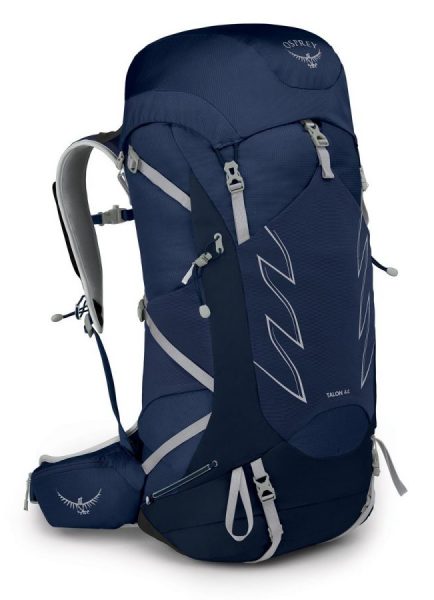
gear review
Osprey Tempest 40 and Talon 44 Review
Ryan Hansen and Martine Fogg give their two cents on Osprey’s largest versions of the Tempest and Talon ranges.
Being bushwalkers used to more extended treks, we’ve long used canvas rucksacks exclusively. They’re bombproof, and they’re trustworthy. So much so that even when it’s come to the shorter walks, we’ve still looked to these 80L+ packs due to their ultimate comfort and undying reliability. But the problem is that they’re heavy, and with us more recently doing more overnight weekenders, we’ve been looking for ways to cut down on weight while not forfeiting comfort or volume. So when Osprey sent us these packs to get our thoughts, we were excited, even if a little dubious, to see if these lightweight, synthetic packs could really be the answer we were looking for.
The Tempest 40 and Talon 44 are the largest of Osprey’s extensive new Talon/Tempest line up, which comprises another 19 products of varying volume, all the way down to a 6L bum-bag. The two series are essentially the same, just tweaked for men (the Talon), and for women (the Tempest), with a host of colour schemes to match. Our comments in this review generally relate to both the Tempest 40 and Talon 44, since they’re the male/female equivalents, albeit sized slightly differently. The Tempest 40 comes in either an XS/S (which slightly reduces the capacity to 38L) or the standard M/L; and the Talon 44 is available in either a S/M (a slightly smaller 42L) or the standard L/XL. Before we get into the review, though, it’s worth noting that the nylon used in the pack is not only made from recycled materials, all the DWR coating on it is PFC-free.
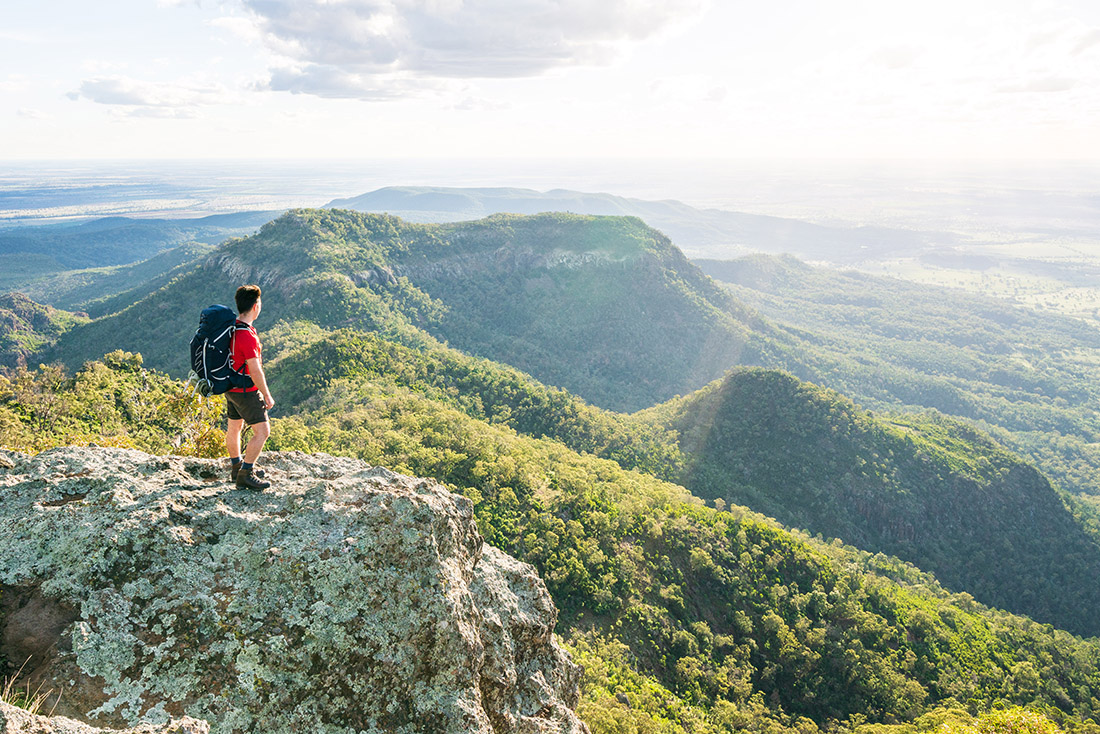
Ryan’s One Cent
The first thing that struck me about the Talon 44 was how much stuff I could fit into it! Our first outing with the packs was on two-day hike in the Warrumbungles (where we both carried sufficient water for a dry overnight camp). When we laid all our gear out on the floor, the first thought that came to mind was: How the hell are we going to fit all that in?! Especially given that I also needed to fit all my photography gear in there as well. I didn’t have worried; not only did it all squeeze in easily, but there was excess room in the main compartment! And despite the amount of gear contained, the pack remained incredibly compact. In addition, the hood or top lid of the backpack is not sewn into the harness; instead, it’s “floating” meaning it can be easily extended up to allow for even more carrying capacity. I’d even go so far as to say that the Talon 44 seemed almost like it had more usable space, and is easier to pack, than my 65L Macpac Cascade!
I should add here that, while we said earlier we’re trying to cut down on weight, we’re in no sense of the word lightweight hikers; some of our camping items are neither light nor compact. My pack weighed in at 20kg+ thank to all the water I carried, which pushed me considerably over the recommended load range of 7-11kg. Despite this, the pack handled the weight with ease—I’d actually be more than confident to carry in excess of 25kg without fear of the structure failing. (While we’re on the subject of weight, with the Talon 44 L/XL weighing in at a touch over 1.4kgs, I noticed a major difference in weight compared to my canvas rucksacks. I didn’t expect to feel such a contrast on my back, but hey, I’ve been wrong before!)
The second feature which stood out was the design of the harness and hip belt. The AirScape suspension back panel allows for improved ventilation for those more strenuous or warmer adventures (or for those hikers who simply sweat a lot, like me!). The hip belt, meanwhile, features adjustment straps which pull inwards rather than outwards, making for easier fine tuning on the fly. And thanks to a velcro design, the harness length is also adjustable, rare for a mid-capacity pack like this—many other packs of a similar volume have fixed harness lengths. As I’m of an awkward, medium height, where my torso is neither short nor long, I found this characteristic particularly valuable, as I could tweak it to just the right length for optimum comfort. It’s also, quite simply, bloody comfortable! The only drawback with the harness is that it can be slightly tricky to adjust as the velcro has a tendency to stick together while you’re still making modifications.
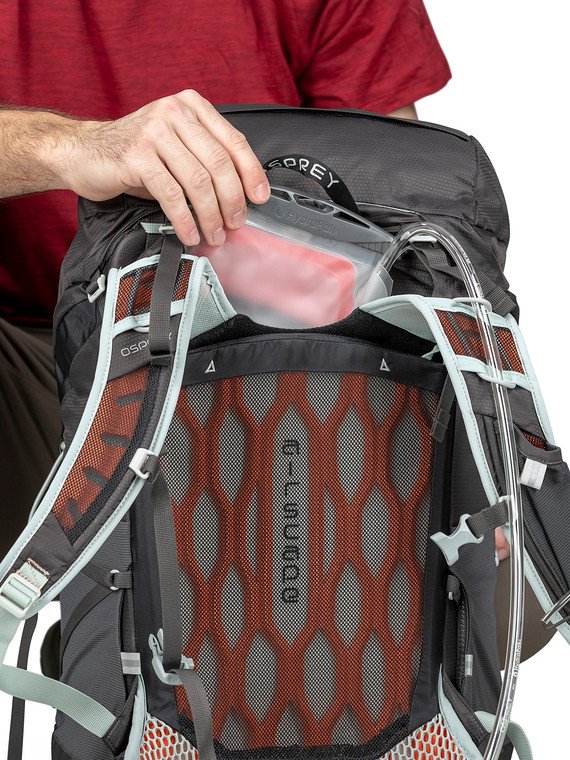
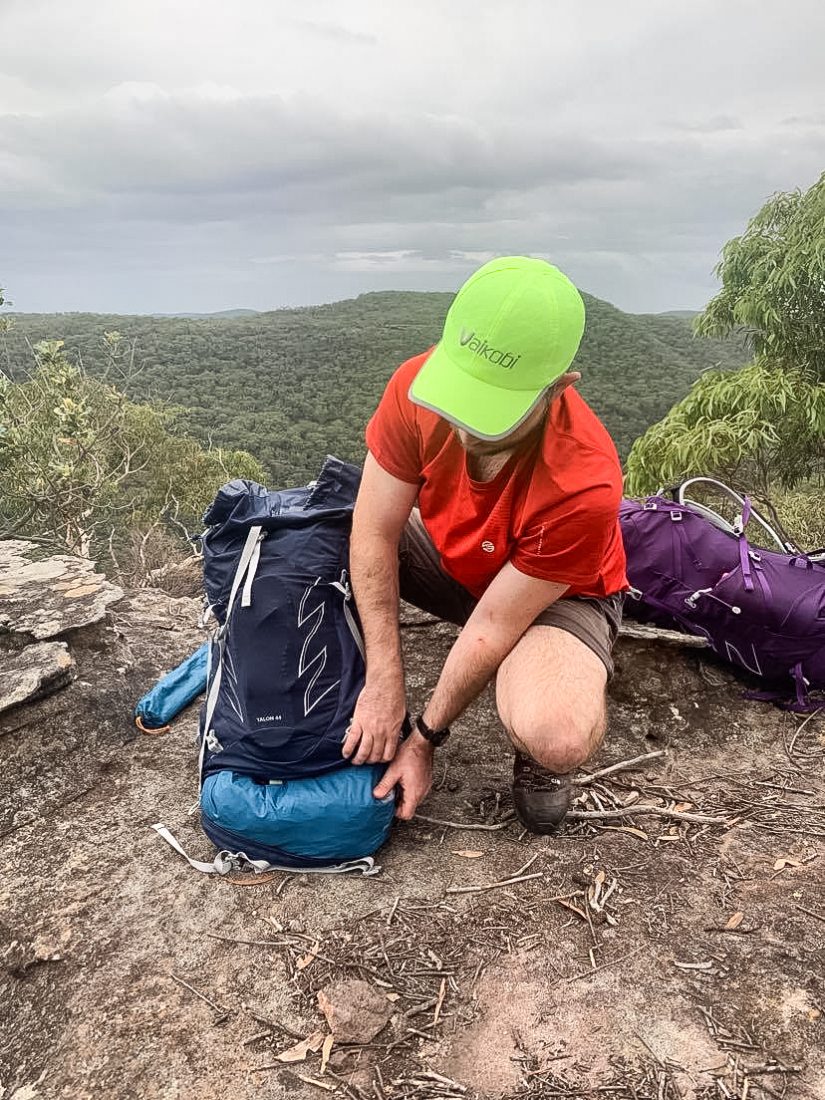
While the Talon 44 and Tempest 40 are predominantly top-loading packs, they also have bottom zip access. Osprey market this as a dedicated sleeping bag compartment. We, however, prefer to stash our tent in there for quick access when setting up camp, as this is the first item we usually want to unload. The bottom access means you don’t have to unpack everything else first; on multi-day adventures, it’s particularly handy if the tent is still damp at pack up, and you want to isolate it from the rest of our dry gear but still want to be able to quickly and easily remove it. Additionally, there are two straps on the outside bottom of the pack, which we used to secure our tent groundsheet, but which could also be used to externally carry a tent, if desired.
Teen’s One Cent
When it comes to hiking, Ryan and I are what you’d call ‘slow and steady’ walkers. We take it all in, stop for plenty of photos and, with any luck, make it to camp before nightfall. But aside from the photo stops, a major contributing factor to our lengthy days is that, when Ryan mentions he’s hungry, we need to stop and give him food immediately. When I say ‘immediately’, I mean IMMEDIATELY. Then and there! Or else we risk a non-functioning Ryan, which is far from ideal. And this situation is where the Tempest 40 and Talon 44 packs really come into their own. Their dual zippered hip belt pockets were ample, able to fit in more than your average sneaky snack for refuelling on-the-go (together they can stash a phone, snacks, lip balm, sunscreen, more snacks, tissues, and even more snacks!)
Another of my favourite features of the Tempest 40 and Talon 44, which is an absolute lifesaver for those with breasts, is the sliding chest strap that allows adjustment, as necessary, to suit any shape or size. I’ve often found chest straps to be in less-than-ideal locations, and if they’re unable to be moved, well…tough titties. And while it’s not like sliding chest straps are rare, they’re not ubiquitous either. So thank you, Osprey!
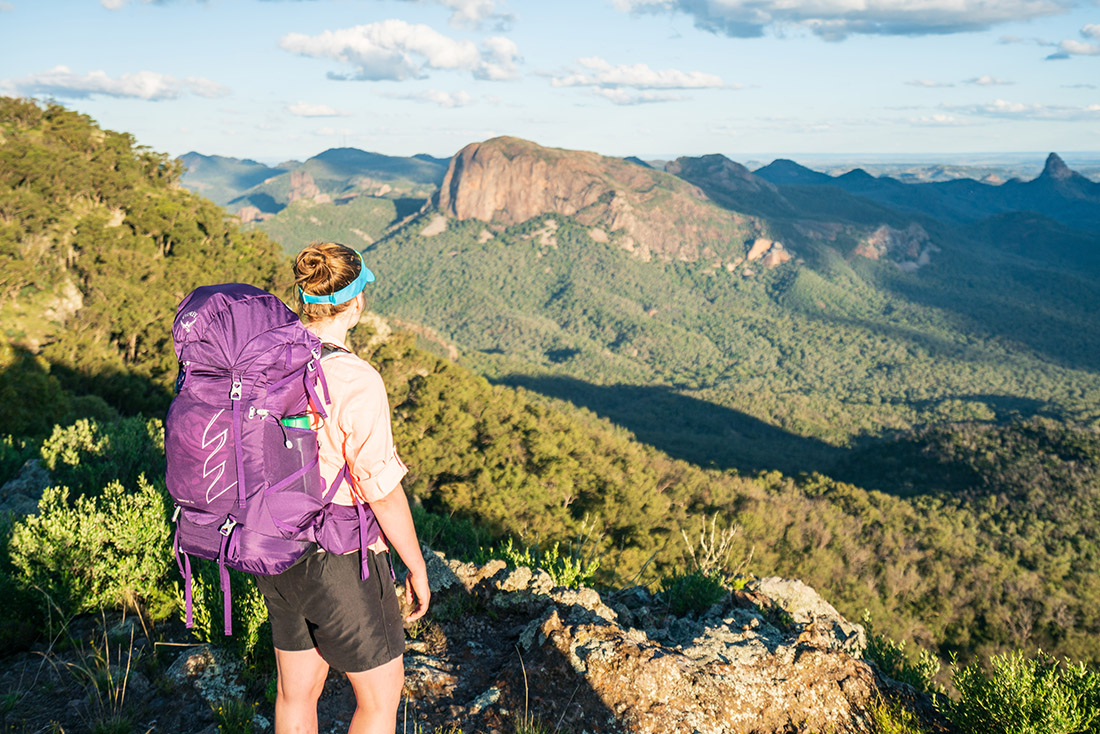
But, I digress, back to the subject of pockets! Perhaps my only real criticism of the Tempest 40/Talon 44 is the size of the entrance to the side pockets. I would have liked to see them tad bigger. While the side pockets—made from an elasticised mesh—could hold our standard 1L plastic water bottles easily enough, squishing them in there past the tight opening was troublesome. We resorted to stashing our water bottles in their pockets prior to packing the main compartment, but this was a little undesirable. On the other hand, though, it should also be pointed out that the pockets aren’t the only place to store water in the Tempest 40/Talon 44; both have water bladder storage compartments sitting neatly behind the harness. While we don’t currently have hydration bladders, I can definitely see the advantage. If, in time, we choose to invest in them, it’s nice to know that there’s a cosy, safe place waiting for them!
As a redeeming feature in terms of pocket size, the front of both packs is equipped with a stretch mesh front panel. They’re well-sized, providing excellent storage for my vast array of jackets. This is perfect for those who find themselves having to patiently (or not so patiently) wait for their photo-pfaffing companions and need to add another layer in the interim. However, being a stretchy mesh, it doesn’t particularly enjoy being scraped against rocks; you need to be mindful of this when walking off-track, or even when storing the packs at camp (or otherwise that handy storage compartment will soon be full of holes!). This also applies to the side water bottle pockets.
But, most importantly, the colour schemes! When selecting a colour for the Tempest 40, I was relieved that I wasn’t forced in to wearing a black pack. On the other hand, purple has a serious vibe going for it, so it was a no-brainer for me (but if black is your thing, there’s no judgement here!). Ryan also favoured the ceramic blue of the Talon 44. However, if there was a bright orange or red option, I could’ve definitely been persuaded (hint, hint Osprey!)
Our Combined Two Cents
We’ve now used our Tempest 40 and Talon 44 packs on two overnighters, and have been thoroughly impressed on both occasions! Due to their lightweight constructions, we’ve noticed a major difference in the overall weights of our packs—a welcome change. We’ll certainly continue to use them on our overnight and short multi-day outings. While it’s too early to make a definitive judgement of their longevity, the high tenacity nylon used for the main section seems robust, and their build quality throughout appears solid, strong, and durable. In saying this, while the packs are perfect for standard on-trail outings, due to their exterior mesh features, we’d be reluctant to take them on serious scrub-wriggling adventures.
In a nutshell, though, while we won’t be ditching our canvas packs, we also won’t be confining ourselves to them anymore, either. The Tempest 40 and Talon 44 are light, affordable, and comfortable, with excellent adjustability and overall clever design; they exceeded our expectations.
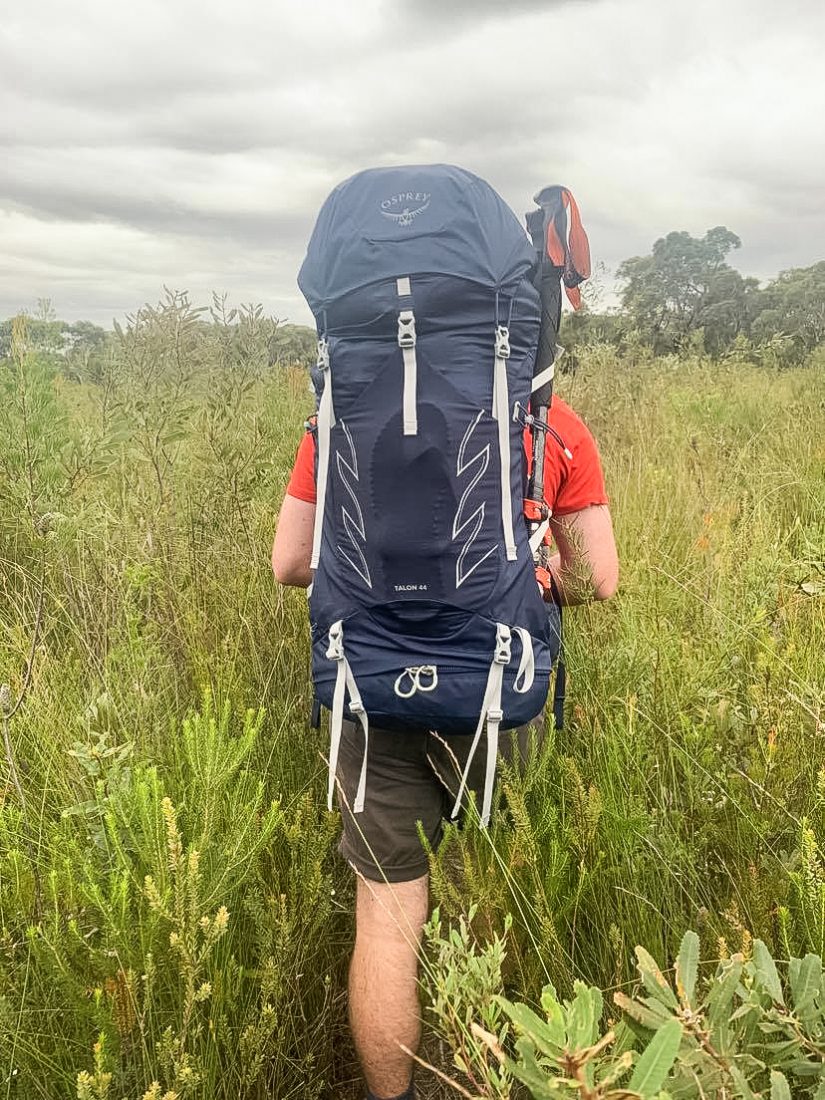
NEED TO KNOW
Size: Tempest – 40L; Talon – 44L
Intended use: Ultralight multiday trips
Weight (as tested): Tempest 40L – 1.29kg; Talon 44L – 1.39kg
RRP: $299.95
More info: osprey.com

